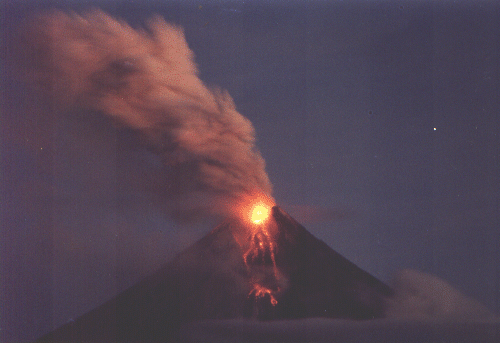|



Other Links

Yahoo!

Santuario de San Vicente de Paul
Hotmail
Alumni.net
Tripod
| |
[Part 1] [Part 2] [Part 3] [Part 4]
Part 4
March 6, 2000 (Monday)
-
A heavy downpour posed a threat of volcanic mudflows
and could hit populated areas and a major road.
-
Relief goods and medicines were distributed among the
evacuees. The DOH had already sought technical and material assistance
from the World Health Organization.
-
Suspended air transportation in Bicol, deprived the
region of tourism revenues from local and foreign tourists. This also
prevented the immediate transport of goods to and from Bicol.
March 7, 2000 (Tuesday)
-
Lava deposits in the upper middle slopes collapsed at
7:46 a.m. to produce a voluminous pyroclastic flow accompanied by tremors
that people mistook for another eruption.
-
Scientists said walls of lava deposits on Mayon's
slope collapsed and rolled down the mountain, throwing up clouds of ash
which swamped the villages as far as 12 kilometers from the crater.
-
People in the streets started running, vehicles
stopped and darkness enveloped some areas for about two hours.
-
The estimated 50 million cubic meters (1,750 cubic
feet) of volcanic materials deposited on the slopes posed an even bigger
danger to the villages and towns at the foot of Mayon.
-
Heavy rains could loosen these deposits and turn then
into violent rivers of mud and rocks that could destroy villages in their
path.
-
Provincial Disaster Coordinating Council (PDCC) had
distributed 70% of the Php20 million released by the then President Joseph
Estrada to eight towns and Legaspi City while retaining 30% for future
contingencies.
[Part 1] [Part 2] [Part 3] [Part 4]
(Note: The above articles
were compiled from various newspaper reports.)
|